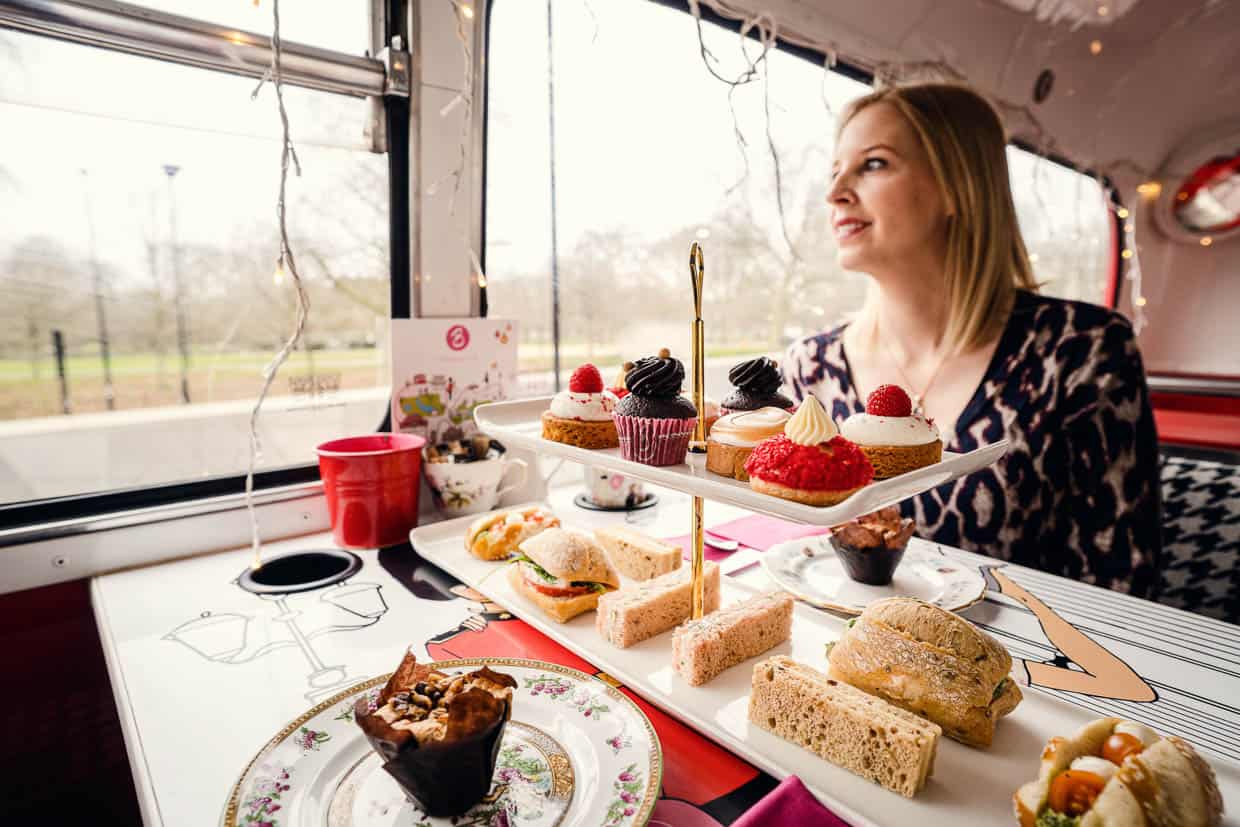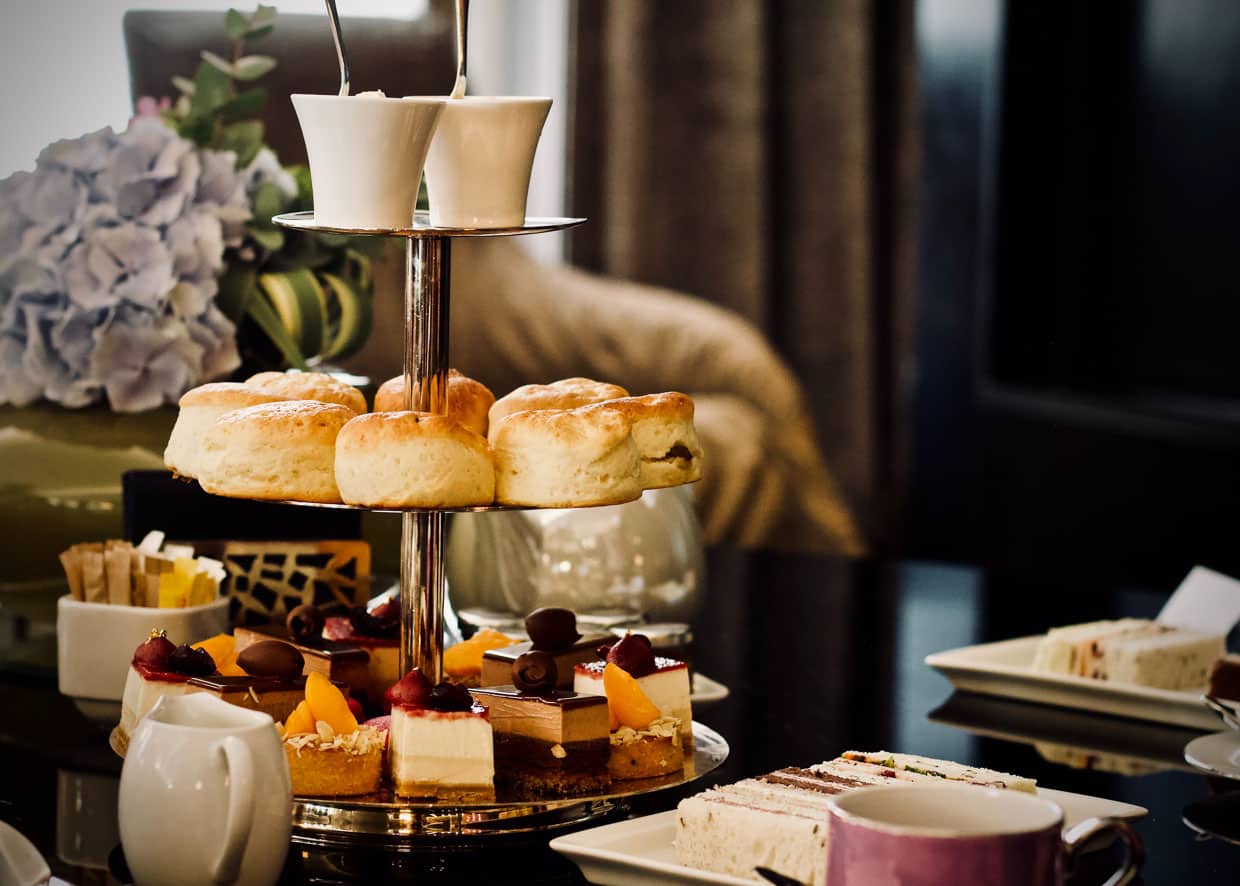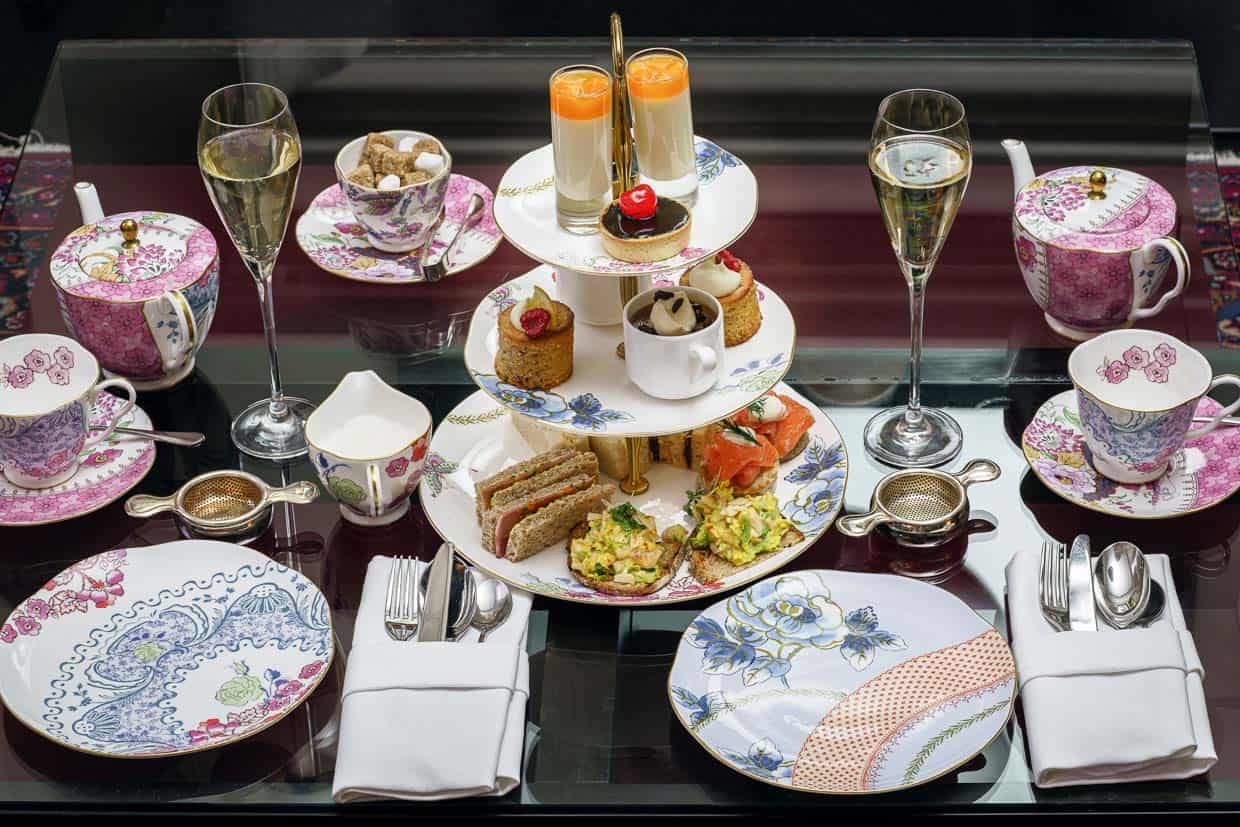The British tradition of high tea sandwiches is revered and imitated all over the world, far beyond the borders of Her Majesty’s tea rooms. But what started this high-class trend, and how did it become the tradition it is today? Read on to explore the history of British high tea sandwiches.

What’s British high tea?
British high tea, also commonly — and mistakenly — referred to outside of Britain and its slang as afternoon tea, is a quintessentially British tradition that is usually served in the late afternoon, around 4 or 5 pm.
High Tea consists of a selection of savory and sweet items such as high tea sandwiches, scones with clotted cream and jam, cakes and pastries. The tea itself is usually a blend of black teas and is served with milk and sugar. High tea sandwich recipes and dishes may vary from region to region in the UK, but they are always elegantly presented and served on tiered stands. Today, British high tea is enjoyed both in private homes and in hotels, tea rooms and restaurants worldwide.
What is the difference between high tea and afternoon tea?
Though they are often used interchangeably outside of Britain, high tea and afternoon tea are similar traditions that symbolize two very different things. In fact, the difference between these two terms encapsulates the surprising, class-based dynamic that is at the heart of British society.
Afternoon tea refers to a small tea-centered meal that was historically enjoyed while seated in cozy parlor chairs or outside in the garden. It brings with it an air of genteel ease and was the purview of the aristocracy, who had time to spare on lengthy dining ceremonies between lunch and dinner.
Despite its lofty name, high tea was the name given to the full meal that laborers had after work, often served at dining tables with high-backed chairs. Today, many working-class British families refer to supper as tea, a remnant of this tradition.
Filled with appetizers, salads, sides, mains and desserts, Food Drink Life's cookbook will become your favorite!
- Easy and delicious recipes from a variety of top chefs and recipe developers.
- Bright, colorful pictures on every page.
- Printer-friendly recipes that you can download instantly to your device.
- Printable shopping list and a kitchen conversion sheet.
Thus, just like private schools in Britain are called public schools, so does high tea represent a middle-class, workingman’s tradition, while its more casually named cousin was reserved for the upper class.
So should you refer to afternoon tea as high tea?
Today many refer to every British tea ceremony as high tea as a direct nod to the blue-blooded tradition of afternoon tea. When people call The Ritz in London to make reservations at this hotel’s revered traditional tea spread, they often ask for high tea.
But you really shouldn’t use those terms as though they meant one and the same.
Apparently, when a customer calls the Ritz Carlton asking for high tea at 2 pm, the staff always knows they’re American. That’s because a British person would always know that high tea is only served after work when a real British laborer would have it. So when making reservations for tea before 4 pm, refer to it as afternoon tea. If the reservation is after work hours and is a more substantial meal, high tea is perfectly appropriate. Though what you will get at the Ritz Carlton will be far from the post-work supper of British workers in the 1800s.

What is the origin of British afternoon tea?
British afternoon tea has its roots in 19th century England, during the Victorian era, as a way for the upper class to satisfy their hunger between lunch and dinner.
Like many dishes, tea made its way from China to Britain in the 17th century when King Charles II and his wife Catherine de Braganza popularized the drink. But it wasn’t until a few centuries later that it became an entire ritual.
It is believed that the Duchess of Bedford, Anna Maria Russell, started the tradition of afternoon tea in the 1840s, as she found herself feeling tired and hungry between lunch and dinner. She began having tea with a light snack in the afternoon and soon began inviting friends to join her.
This eventually evolved into a social event amongst the upper classes, with elaborate tea services featuring delicate finger sandwiches, scones, cakes and, of course, tea. This meal was often had outside in the fresh air, especially in warm climates like India or in the warmer summer days in Britain. Afternoon tea became a symbol of refinement and was associated with sophisticated leisure activities.
What to serve for British high tea?
High tea is a more substantial meal that is typically served around 4 or 5 pm, and it includes savory and sweet options.
- Sandwiches: Traditional fillings include cucumber and cream cheese, salmon, egg mayonnaise and ham and mustard.
- Scones: Whether they are filled or plain, scones are often served with clotted cream and strawberry jam.
- Pastries: Little petit fours and fruit tartlets.
- Cakes: Victoria sponge cake and lemon drizzle cake are common choices.
- Biscuits: Shortbread cookies and macaroons can be found on any high tea cookie tray.
Finally, no high tea is complete without a good cup of tea, and black tea such as Earl Grey and Darjeeling are favorites.
What types of sandwiches are served with afternoon tea?
Sandwiches are a staple of the afternoon tea table and are usually served using a small triangular or rectangular piece of bread with a filling. Popular sandwiches for afternoon tea include cucumber and cream cheese, smoked salmon and cream cheese, egg salad, chicken salad, ham and mustard and beef and horseradish.
British high tea sandwiches are usually served with crusts removed to be more refined and easy to chew, and the bread is often thinly sliced. They are a light and refreshing accompaniment to the sweet cakes and pastries that are also served.
Removing the crusts is also a nod towards the aristocratic roots of afternoon tea when one could afford to throw out perfectly nutritious parts of the bread in favor of dainty cakes and sponges.
The most famous high tea sandwich, the cucumber sandwich, perfectly symbolizes this tradition. Cucumbers were hard to grow and had no nutritional value, which is part of why the British nobility in India chose them to be their cool-down snack for tea time.
Whether you are enjoying afternoon tea at home or at a fancy tea room, sandwiches are a must-have for any traditional afternoon tea experience.

What does afternoon tea look like in Britain today?
Today, afternoon tea in Britain is a ceremony reserved for special occasions. “Afternoon tea is a real treat in England. You often buy it as a gift for people (hugely popular for Mother’s Day), and it’s something to savor,” says Mandy Applegate of Splash of Taste.
“Top-end afternoon tea at places like the Savoy or the Ritz in London is like a theater production in itself, and you enjoy the venue as much as the afternoon tea. For those wanting an extra treat, you can usually upgrade to include a glass of champagne.”
How did High tea travel from Britain to all over the world?
Just as tea itself arrived in Britain due to colonization, so did the traditions of the afternoon and high tea travel the world over as Britain expanded its reach across the globe.
Britain was known to be a soft-power colonizer, and it brought many of its traditions to the countries that became a part of the British Empire, like Australia, Canada, India and South Africa.
Over time, it morphed to look as elaborate as the Dutchess of Bedford’s afternoon tea or the high tea of the Scottish workmen, which often included warm pies and cold cuts.
“Hot tea is one of my favorite afternoon pick-me-ups. Growing up in South Africa, my grandparents often enjoyed afternoon tea at home. My mother brought this tradition to my family in America, and I have grown to love it,” recalls Susannah Brinkley Henry of Feast + West. “For me, afternoon tea at home can include cookies or other sweet snacks served to company. On other days, a simple cup of tea makes me appreciate that tradition. Either way, a cup of tea is always a chance for me to slow down and enjoy the day.”
To wrap up
With a mix of highfalutin aristocrats and everyday laborers as fans, British tea sandwiches and ceremonies have a conflicted and illustrious tradition. Wherever you are in the world today, you can likely find a local afternoon tea ceremony to frequent and get a taste of this British tradition. Just make sure you distinguish your high tea from your afternoon tea, and you’ll be well on your way to sipping tea like the best of them.
Ksenia Prints is a food writer, blogger, photographer and recipe developer from Montreal, Canada. She blogs over At the Immigrant’s Table, a food blog showcasing healthy, beautiful international recipes for adventurous home cooks. She loves to highlight ethnic cuisines and immigrant cultures by working with chefs from relevant countries, and to adapt those recipes to gluten free, vegan, vegetarian, sugar free and other dietary restrictions.
This article originally appeared on Food Drink Life.
